Picture this: It’s a Friday evening. You stroll into your neighborhood liquor store, expecting the usual wall of whiskey, racks of rosé, and perhaps a chilled six-pack or two. But instead, your eyes are pulled toward something unexpected—a sleek, tastefully lit shelf filled with craft non-alcoholic spirits, adaptogenic sodas, and zero-proof IPAs. You do a double take. Wait, am I still in a liquor store?
Yes, you are. And what you’re witnessing isn’t just a trend—it’s a full-blown reinvention.
This is liquor store adaptation in real time. And it’s not just about adding a few soda alternatives. It’s about rethinking the shelf, the customer experience, and the very definition of what a liquor store can be in 2024 and beyond.
The Sober Curious Movement Is No Longer a Niche
Let’s clear this up: non-alcoholic drinks aren’t just for teetotalers anymore. Between Gen Z’s mindful consumption habits, wellness-focused Millennials, and even Boomers looking to cut back, the “sober curious” trend has gone mainstream. And the numbers back it up.
According to Synergy Flavours’ 2024 report, the global non-alcoholic beverage market is projected to grow steadily, driven by innovations in flavor, functionality, and lifestyle alignment. Consumers aren’t just cutting back on alcohol—they’re actively seeking out drinks that offer something more: mood enhancement, gut health, hydration, and social inclusivity.
In this cultural shift, liquor store adaptation isn’t optional—it’s essential.
From Booze Hubs to Beverage Boutiques
For decades, liquor stores were just that—places to buy liquor. But as consumer expectations evolve, so must the format. Picture your store not as a booze hub, but as a beverage boutique—curated, experiential, and inclusive.
Here’s what that transformation can look like:
- Dedicated Non-Alcoholic Sections: Create a clearly defined, aesthetically pleasing area for zero-proof products. Think artisanal shelving, inviting signage, and tasting notes.
- Educated Staff: Train your team to speak confidently about non-alcoholic wines, spirits, and functional beverages. Enthusiasm is contagious.
- Sampling Events: Host “sober tastings” where customers can try before they buy. It’s a brilliant way to convert curiosity into loyalty.
This reimagination doesn’t mean abandoning your traditional offerings. It means expanding your relevance and meeting your customers where they’re headed.
Inventory Strategy: More Than Just Stocking Up
One of the key elements of liquor store adaptation is strategic inventory diversification. But this isn’t just about throwing a few non-alcoholic beers on a shelf and calling it progress. It’s about understanding your local clientele and curating a collection that feels intentional and exciting.
Consider these product categories making waves:
- Non-Alcoholic Spirits: Brands like Seedlip and Ritual offer sophisticated, mixable bases for zero-proof cocktails. They’re perfect for customers who don’t want to compromise on flavor or ritual.
- Functional Beverages: Kombuchas, adaptogenic elixirs, and mood-boosting tonics are flying off the shelves, especially among health-minded shoppers.
- Craft NA Beer: With breweries like Athletic Brewing leading the charge, non-alcoholic beer has gone from embarrassing to enviable.
For a deeper look at how these trends are reshaping the alcohol industry at large, check out this insightful breakdown from Bottlecapps. It’s a must-read for any store owner trying to keep pace with the times.
Marketing That Speaks to the Mindful Consumer
Here’s the thing: the sober curious crowd doesn’t respond to traditional booze marketing. They’re not chasing wild nights—they’re chasing wellness, connection, and control. Your messaging needs to reflect that.
Try these approaches:
- Storytelling Over Selling: Share the story behind your non-alcoholic brands. What inspired the founder? What makes the product unique?
- Social Proof: Use product reviews, customer testimonials, and influencer shoutouts to build credibility.
- Lifestyle Alignment: Position your store as a partner in wellness and intentional living, not just a place to buy drinks.
People want to feel seen. If your marketing can reflect their values and aspirations, you’ll build a base of fiercely loyal customers.
Redefining Success in the Liquor Industry
Let’s be honest—many liquor store owners feel caught between tradition and transformation. There’s a fear of alienating core customers, or worse, investing in a trend that fizzles out. But here’s the truth:
This isn’t a trend. This is a shift.
Consumers are no longer binary in their drinking habits. They’re fluid, flexible, and open to a wide range of experiences. By embracing this multiplicity, liquor stores don’t lose identity—they gain dimension.
And the stores that adapt now will be the ones that define the future of beverage retail.
Practical Steps for Liquor Store Adaptation
Alright, let’s bring it home with some real-world action steps. If you’re ready to embrace the non-alcoholic boom, here’s where to start:
- Audit Your Current Shelf Space: Identify underperforming SKUs and make room for non-alcoholic options.
- Partner with Emerging Brands: Reach out to suppliers who specialize in zero-proof beverages and negotiate exclusive local deals.
- Educate Your Team: Host internal tastings and training sessions so your staff can speak authentically about the products.
- Promote Through Events: Launch a “Sober Saturday” tasting series or collaborate with local gyms, yoga studios, or wellness influencers.
- Track Customer Feedback: Use in-store surveys, social media polls, or POS data to see what’s resonating (and what’s not).
Growth doesn’t require grand gestures. It requires consistent, intentional steps in the direction your customers are already going.
Final Sip: The Future Tastes Different
The world is changing—fast. But that’s not a threat. It’s an invitation. Liquor stores have always been cultural barometers, reflecting the tastes and values of their communities. Today, those values include balance, wellness, and belonging.
So rethink the shelf. Reimagine your role. And remember that your store can be more than a place where people find alcohol—it can be a place where they find options, connection, and a new kind of celebration.
By embracing the non-alcoholic revolution, liquor stores can not only survive but thrive in a world where moderation is the new norm.

